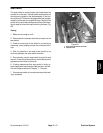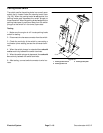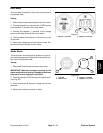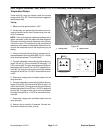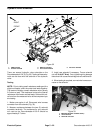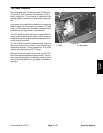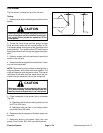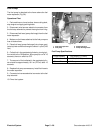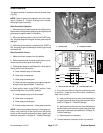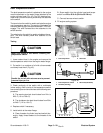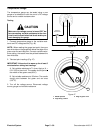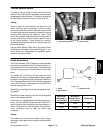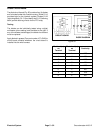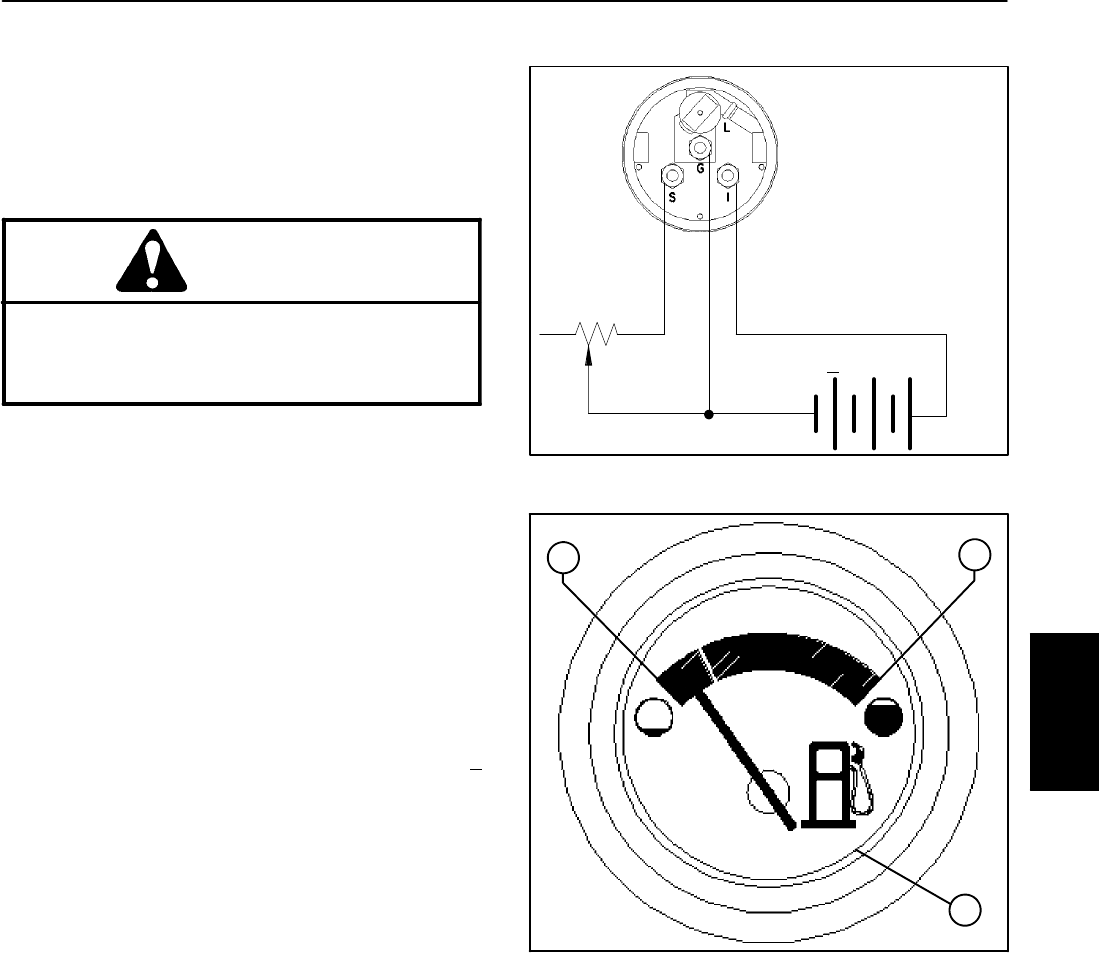
Groundsmaster 4100--D Page 5 -- 25 Electrical System
Fuel Gauge
The fuel gauge can be tested using a new gauge as a
substitute or with the use of a DC voltage source and a
variable resistance box (see Fuel Sender Testing in this
section for additional information).
Testing
CAUTION
Make sure the voltage source is turned OFF be-
fore connecting it tothe electrical circuit to avoid
electrical shock and prevent damaging the
gauge.
1. Connect fuel gauge to the variable resistance and
DC voltage source (Fig. 36).
NOTE: When reading the gauge test point, there are
two white dots on the gauge face below the edge of the
glass cover for each test point. For each variable resist-
ance setting, the needle must be pointed between the
two white dots.
2. Take test point readings (Fig. 37).
IMPORTANT: Allow circuit to warm up for at least 5
minutes before taking test readings.
A. Setvariable resistance to 240 ohms. Apply a 14 +
0.01 VDC to the circuit. The needle should point to
the left edge of the red area (empty).
B. Set variable resistance to 33 ohms. The needle
should point to the right edge of the green area (full).
3. Turn off the voltage source. Disconnect voltage
source, gauge and variable resistance.
Figure 36
+
--
VARIABLE
RESISTANCE
14 VDC + 0.01 VDC
1. Empty position
2. Full position
3. Glass face edge
Figure 37
1
2
3
Electrical
System



